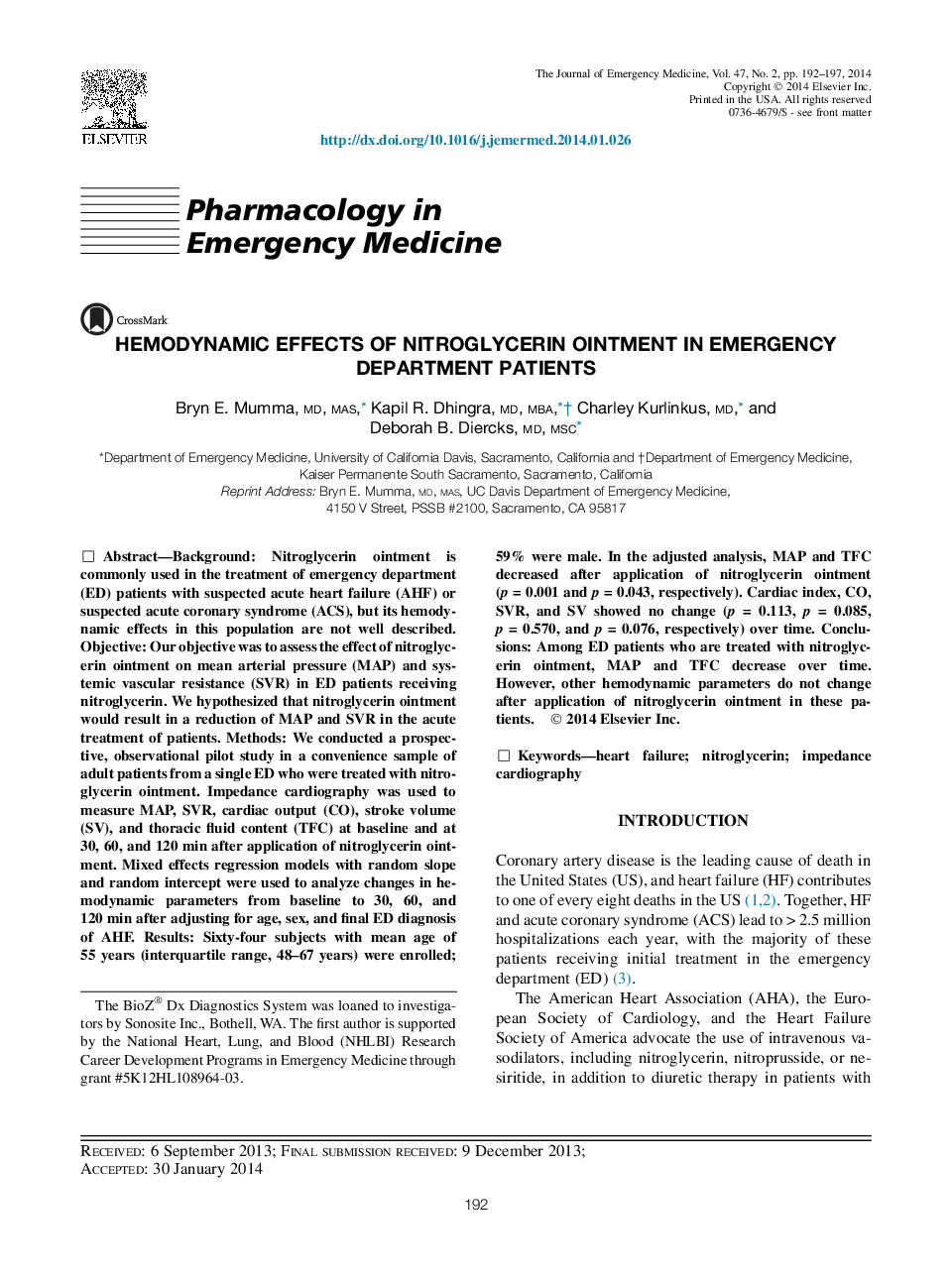| Article ID | Journal | Published Year | Pages | File Type |
|---|---|---|---|---|
| 3247097 | The Journal of Emergency Medicine | 2014 | 6 Pages |
BackgroundNitroglycerin ointment is commonly used in the treatment of emergency department (ED) patients with suspected acute heart failure (AHF) or suspected acute coronary syndrome (ACS), but its hemodynamic effects in this population are not well described.ObjectiveOur objective was to assess the effect of nitroglycerin ointment on mean arterial pressure (MAP) and systemic vascular resistance (SVR) in ED patients receiving nitroglycerin. We hypothesized that nitroglycerin ointment would result in a reduction of MAP and SVR in the acute treatment of patients.MethodsWe conducted a prospective, observational pilot study in a convenience sample of adult patients from a single ED who were treated with nitroglycerin ointment. Impedance cardiography was used to measure MAP, SVR, cardiac output (CO), stroke volume (SV), and thoracic fluid content (TFC) at baseline and at 30, 60, and 120 min after application of nitroglycerin ointment. Mixed effects regression models with random slope and random intercept were used to analyze changes in hemodynamic parameters from baseline to 30, 60, and 120 min after adjusting for age, sex, and final ED diagnosis of AHF.ResultsSixty-four subjects with mean age of 55 years (interquartile range, 48–67 years) were enrolled; 59% were male. In the adjusted analysis, MAP and TFC decreased after application of nitroglycerin ointment (p = 0.001 and p = 0.043, respectively). Cardiac index, CO, SVR, and SV showed no change (p = 0.113, p = 0.085, p = 0.570, and p = 0.076, respectively) over time.ConclusionsAmong ED patients who are treated with nitroglycerin ointment, MAP and TFC decrease over time. However, other hemodynamic parameters do not change after application of nitroglycerin ointment in these patients.
